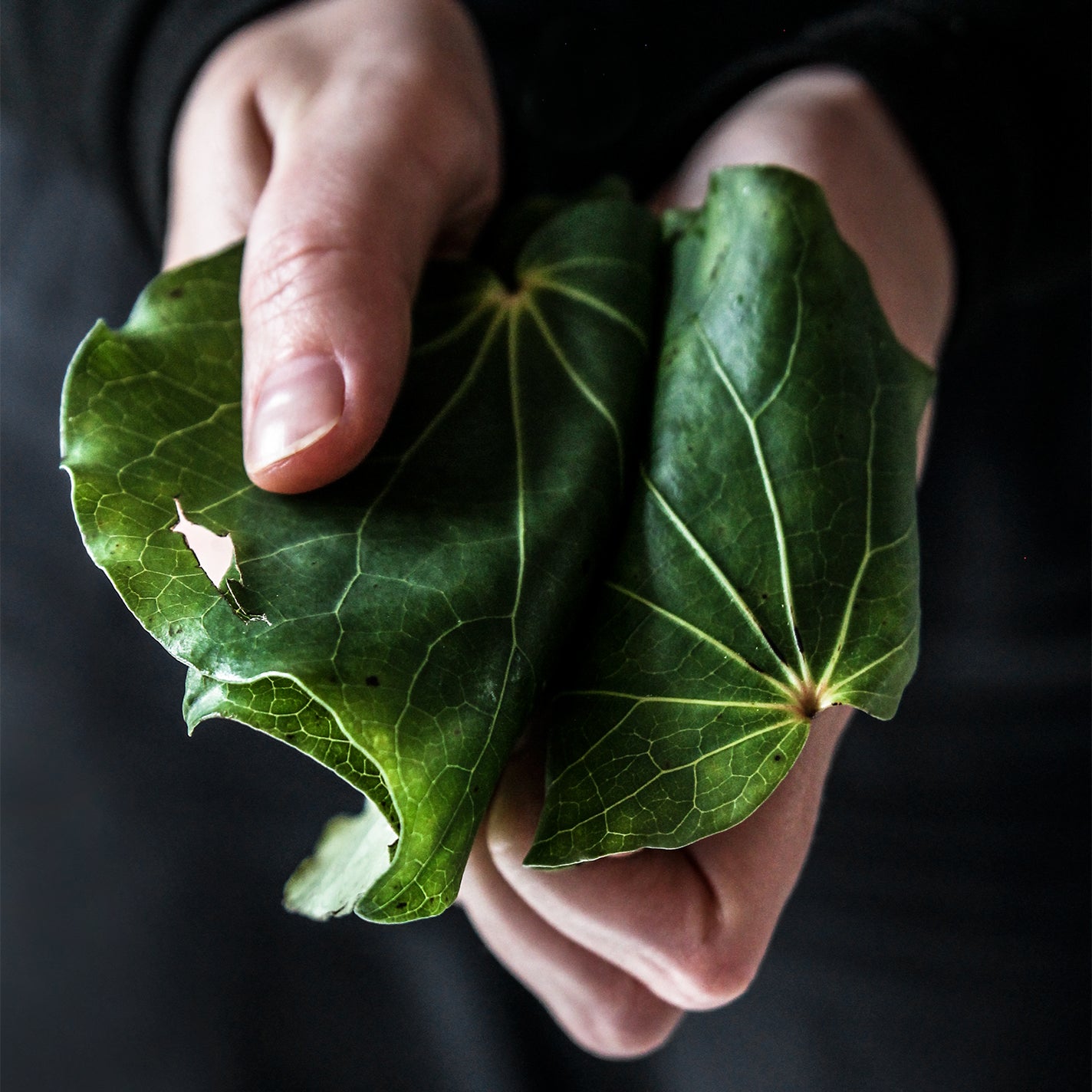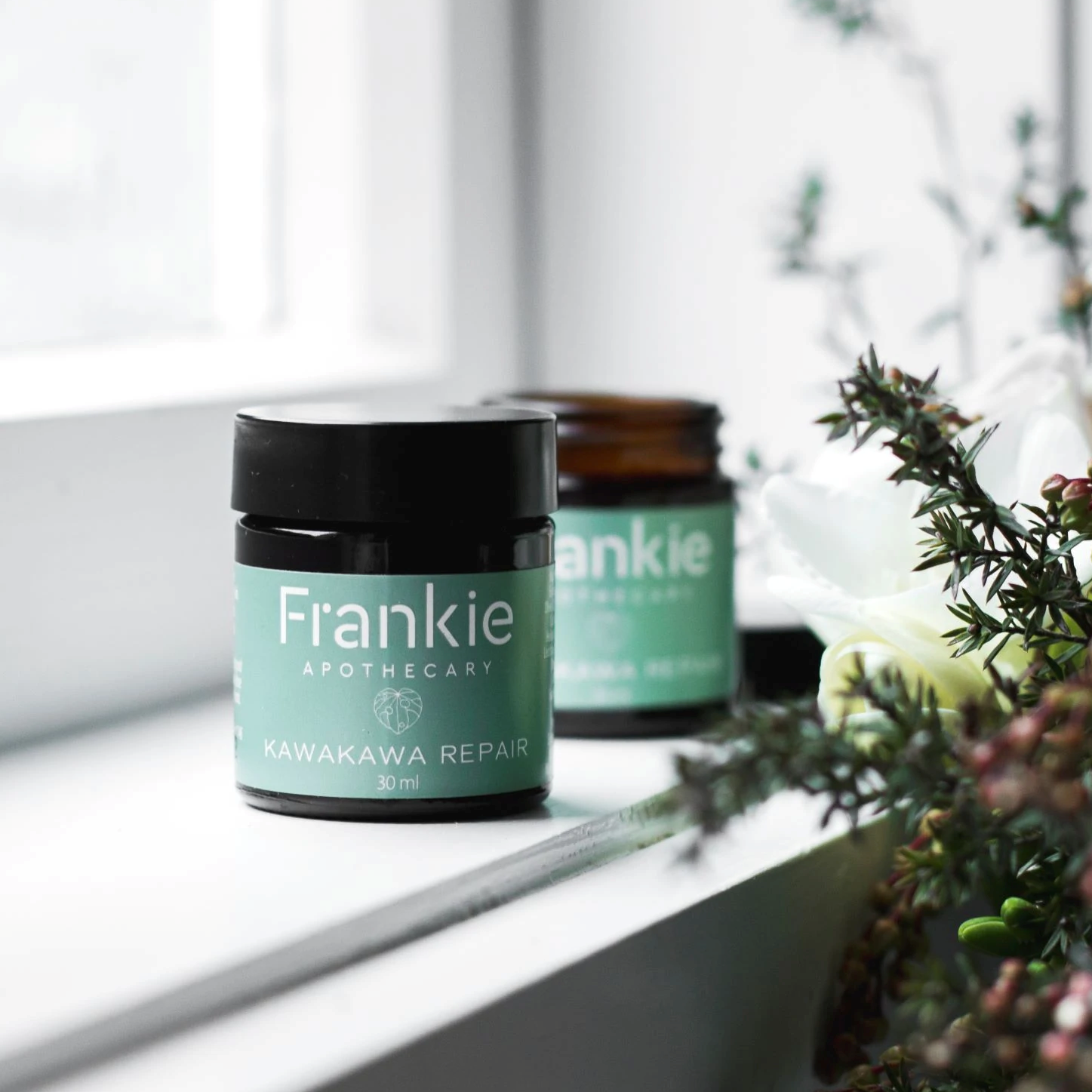
Wishing you a Frankie Christmas - 4 weeks of giving this Christmas
Wow, can you believe it's almost Christmas again! We wanted to do something to give back in our small way and to bring some Christmas cheer to our community, so...
If you or someone in your family is struggling through eczema at the moment, we hope you find this information on the causes and some treatments useful. We've gathered our most helpful tips for dry, itchy skin relief to share with you. We hope you find this information useful in your skin journey.
1. Please always consult your preferred health professional first and foremost. Visit your Health professional, GP or Naturopath to assess your Eczema. They can help eliminate any infection and arrange for allergy testing.
2. Undertake a food elimination diet to eliminate the presence of a food allergy which could be causing your eczema. We have shared an easy to follow food elimination diet on our blog to help you identify what any food-based causes of your eczema are.
3. Begin applying Frankie Kawakawa Balm to help your Eczema up to 3 times a day. Our natural Kawakawa Balm is designed to soothe itchy inflamed skin and also create a strong barrier against moisture loss and external allergens - this is a crucial step in ensuring your Eczema does not worsen.
4. Try to eliminate all synthetics from the home - washing powders and cleaners, soaps and body washes and shampoos and synthetic fabrics in clothing and bedding. We have shared information about eczema triggers in clothing here.
5. Eliminate all dust and mould in the home, and ventilate your home everyday. Here is an article on eczema help that addresses environmental eczema triggers.
6. Add Frankie Soothing Oat Bath Soak to the bath every night to help ensure skin is protected at night and itchy free. Always follow with Frankie Kawakawa Repair Balm.
7. Introduce a good probiotic to your diet either in pill, liquid form or by eating a diet rich in pro biotics (yoghurt, kefir, bone broth, fermented foods).
8. Be ready for the seasonal changes that can provoke eczema flare ups. We have written a guide for Eczema in Winter and Eczema in Summer.
If you have any specific questions or would like further support in your Eczema journey, feel free to email us and our team of Naturopaths can point you in the right direction.
NZ Native Kawakawa has been used medicinally for centuries. The Kawakawa shrub (Macropiper excelsum) is a distinctive native New Zealand plant with aromatic heart-shaped leaves. It is one of the most important and widely used plants in Rongoā Māori (traditional Māori herbal medicine), and is still widely used as a topical treatment for dry, itchy irritated skin today.
The distinctive leaves of Kawakawa (Macropier excelsum) meant it was easily recognised by Māori as a relative of the famous Pacific Kava plant (Piper methysticum) when they arrived in New Zealand; and as you would expect, Kawakawa shares some of the medicinal properties of Kava - although not the mild narcotic effect!
See the super stars of our dry, itchy skin care range here.
As well as being an effective skin remedy, Kawakawa leaves can be chewed or made into a tea infusion to treat gastrointestinal stomach ailments, high cholesterol bladder problems, to balance blood sugar and blood pressure, and reduce the pain of tooth aches. In rongoā, Kawakawa was also used for bronchitis, rheumatism, bad bruising, burns, stings and insect bites, sunburn and dry, generally irritated skin.

With laboratory testing scientists have demonstrated that Kawakawa has a number of wonderful botanical actives.
Myristicin, an analgesic 'pain-blocking' substance related to the antiseptic eugenol:
"Myristicin is an anticholinergic agent meaning it blocks certain nerve impulses."
Myristicin also has anti-inflammatory, anti-microbial, and antioxidant properties.
Lignins which are useful in cosmetic and topical skin treatments:
"Kawakawa leaves also contain a series of lignans which act as powerful antioxidants in the presence of oil (such as Kawakawa oil), which act as free radical scavengers, and boost skin cell health dramatically."
Antimicrobial and analgesic properties useful for reducing inflammation caused by skin conditions such as psoriasis, eczema and rashes:
"Kawakawa extract has been shown to have anti-inflammatory activity."
Diayangambin which has anti-inflammatory and immuno-suppressant effects, which means it can help with anti-immune disorders like rheumatism and psoriasis.

The Kawakawa leaves and stems are packed full of chemical actives that have numerous medicinal and healing properties.
Chemically, Kawakawa contains analgesic 'pain-blocker' and anti-inflammatory, anti-microbial, antioxidant myrsticin, eugenol which is an antiseptic, and antioxidant lignins. It is rich in iron, magnesium and vitamins.
We preserve the effectiveness of all these natural chemical actives in our Kawakawa extract. To ensure they are not lost quickly in our products like Frankie Kawakawa Repair Balm, an additional antioxidant must be added. We use a rich natural Vitamin E antioxidant as a natural preservative in our Kawakawa Balm.
Read on to find out why these incredible natural Kawakawa actives may be able to help eczema-prone skin.
Dry, itchy skin conditions are often an inflammatory response within the body to some internal or external trigger. This is why finding out what's triggering your dry, itchy skin flares is so important - see the Itchy skin Information below. However this can take some time and it's crucial to manage your condition before it gets out of hand and begins to affect your everyday life.
Once an inflammatory response is triggered, the body reacts by releasing a huge amount of moisture from the skin, which leads to the shredding of the outer skin layers, exposing the inner layers and altering the pH of the skin. This is what causes eczema damaged skin to become itchy, inflamed and raw.
Frankie Apothecary's Kawakawa Repair Balm is an intensive natural moisturiser containing zero water. This means our Kawakawa Repair is strong enough to create a long lasting barrier over the skin, trapping in the moisture that is trying to seep from the skin. This also allows the soothing Kawakawa Repair actives enough time to do their job to support the repair of itchy, inflamed skin.
You may have tried many eczema creams and seen little difference. One reason may be because the water content in most eczema creams means they are just not strong enough to create a lasting barrier on the skin - and the synthetic chemicals required to preserve conventional eczema creams may be triggers in themselves.
We recommend applying Frankie Kawakawa Repair Balm 3 times a day to very inflamed skin, and then once a day to help prevent future flare ups of irritation. Always consult your Health Care Professional.
The only exception to this is if you have used a steroid cream in the last 6-10 months. In that case, read how others have gradually swapped to using our natural range.

Wow, can you believe it's almost Christmas again! We wanted to do something to give back in our small way and to bring some Christmas cheer to our community, so...

We’ve seen an amazing response to our Kawakawa Balm in Christchurch, and we’re excited to shine the spotlight on our network of amazing retailers in the region. Whether you're grabbing...

"Among the shining stars of the 2025 Green Awards is Frankie Apothecary, whose Natural Sun Defence SPF 40 earned this year’s Gold Award for Best Sun Protection." What a buzz to receive such...

Because our Kawakawa Balm is all natural and free from synthetic chemicals or essential oils, it is designed to be safe for dogs, horses, cats and other animals. Check these...